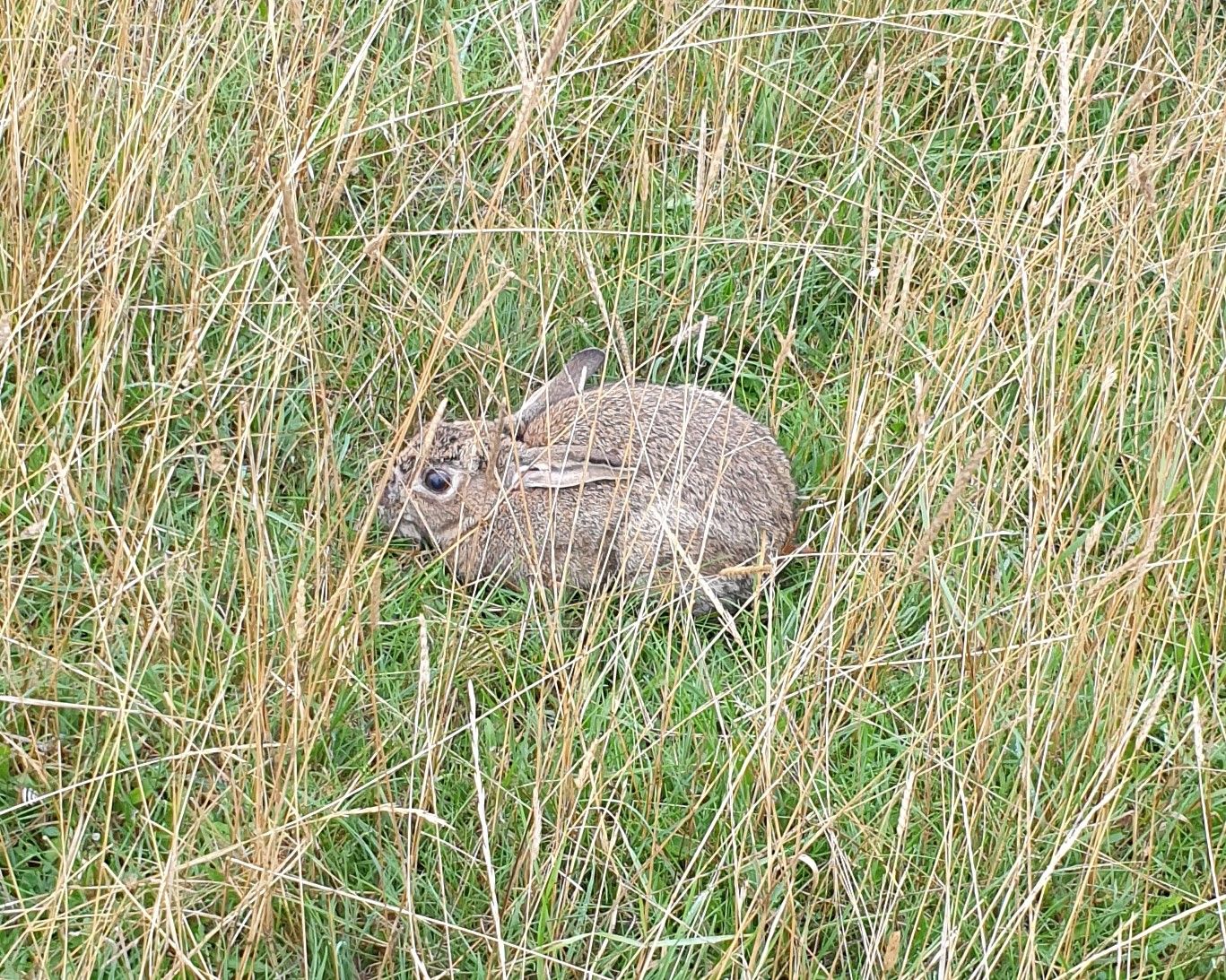
A hare in the field
‘Every field should have a hare’ – J Lewis Stempel
Stippled, immobile, still as a rock. Ears clapped down tight along its back. One large liquid blackberry eye, unblinking.
“Goodness, see that? Hare or rabbit? I nearly stepped on it.”
“Hare, I think: look at those long ears.”
“Is it even alive?”
It remains still, breathless. The vitric eye stays open. Definitely alive, quietly and desperately throwing out a cloak of invisibility.
“Why doesn’t it just run away? Hope it’s okay.”
I take a photo and we walk on quietly, glad our hapless Labrador has missed it. Just like we nearly did.
Later, I find out that this is what leverets do: pretend not to be there. Their mothers leave them all day, returning only in the evening. Although grown hares can run at 45mph, ‘sitting tight’ is their chief instinct. It leaves them very vulnerable. A few years ago, the sight of up to five hares boxing and chasing – oblivious of the grazing sheep – used to be a regular March joy. Now, each May, the meadow grass and flowers are scalped into silage in a single day.
This year, the hot weather delayed the cutting until July. Maybe this little late-born, black-eyed hare will survive to dance next spring.
The Hare Preservation Trust estimates that the UK’s hare population has declined by three million since 1800.